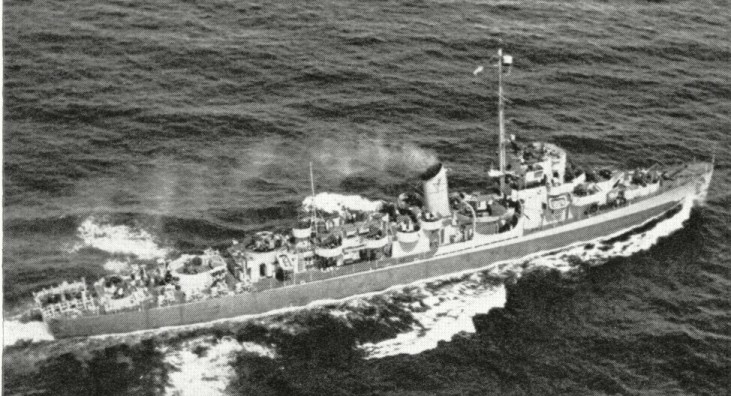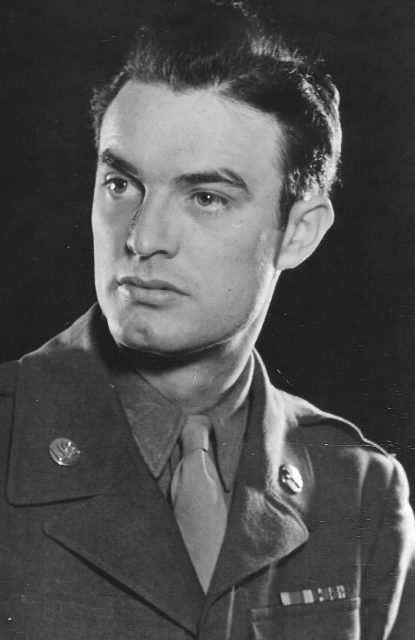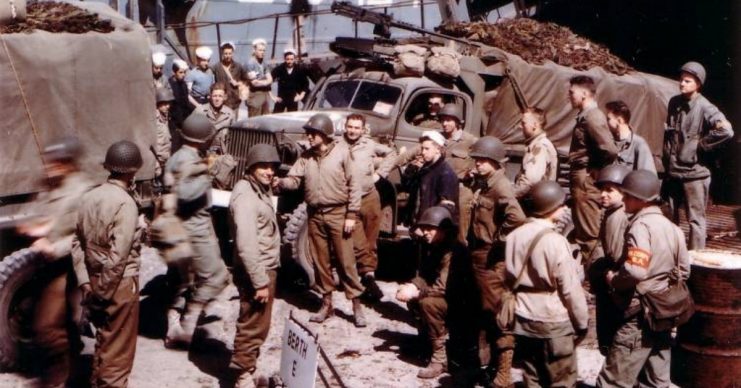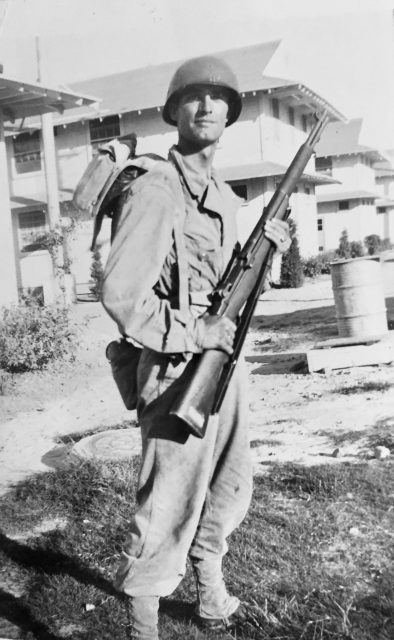
After graduating high school in Kansas City, a young Lon Gilbert Amick followed his older brother’s footsteps by attending William Jewell College in nearby Liberty.
Two years later, he made the decision to transfer to the University of Missouri in Columbia, where he participated in the ROTC program and gained valuable experience as an actor that would benefit him during World War II.
Enlisting in the U.S. Army on July 31, 1942, Amick was granted a deferment until the following year so that he could complete his bachelor’s degree in journalism. His military records indicate he entered active service on March 23, 1943.
“My oldest brother, Eugene, was killed August 9, 1942, while serving as a communications officer on the USS Astoria during the invasion of the Solomon Islands,” said Amick’s younger sister, Joanne Comer. “They commissioned the USS Amick (destroyer escort) in his honor and Lon was able to get leave from his training to attend the launching on May 27, 1943.”

Amick traveled to Camp Wolters, Texas, in the spring of 1943, spending several months in training to prepare him as an infantryman to replace those lost in combat—a military specialty that he would leave behind shortly after his arrival overseas.
The 21-year-old soldier boarded a troopship in early July 1944, making the two-week journey across the ocean. In an undated letter sent home during the war, Amick provided a candid description regarding the unpleasant conditions of his two-week trip across the Atlantic.
“The ship was crowded, terribly crowded,” wrote the soldier. “Dice, thick smoke, field equipment, sentiment, homesickness, dirty stories, raucous laughter, and ever-present loneliness amid thousands was much in evidence.”

Disembarking the ship in Liverpool, England, in July 1944, his group soon made their way to a marshalling area and days later boarded landing craft bound for Omaha Beach, which, the month previous, served as ground zero for death and devastation during the famed D-Day landings.
“My first job in France was loading ammunition,” the soldier wrote. “They needed it badly and several of the men that came in with me were immediately put to work. The front was six miles away.”
The area along the Normandy coastline continued to buzz with activities to provide service and support for soldiers engaged in combat on the front lines of combat. During a rare break in the action, Amick glanced at an advertisement that captured his attention.

“I noticed a (pamphlet) looking for stage talent and walked down to that building—a tent in the field,” he wrote in a letter to his parents. “(I) demonstrated a few imitations and ‘The Tell-Tale Heart’ and was told to perform in a show—I did, and the rest you know,” he added.
The young soldier was transferred to 6817th Special Service Battalion (with whom film star Mickey Rooney was assigned during the war) and began traveling across Europe with a small performance troupe comprised of actors and band members. Their early shows, he explained, “were laughable” with musicians being recruited from foxholes and bandstands constructed from empty rations crates.
Their group quickly blossomed with a full band to compose music for their shows. They provided entertainment in venues ranging from theaters to “bomb-cratered villages” in addition to “a circuit of hospital and Red Cross clubs.” When the war ended the following spring, he was reassigned to duties more aligned with his journalism degree from MU.

“(I) am putting out a paper for the depot now,” wrote Amick to his parents in a letter dated September 22, 1945. “I am enclosing a copy of the paper. I have marked what I have written simply because I know it will interest you …. The paper is exactly what the doctor ordered. I am myself again.”
Pfc. Amick remained in Europe for several months after the war, boarding a troopship for his return home in February 1946. On March 2, 1946, he received his discharge from the U.S. Army through the separation center at Fort Dix, New Jersey, having accrued nearly 20 months of overseas service.
Integrating back into civilian life, Amick married the former Naomi Campbell in 1950, and the couple raised five children. In the years after the war, he remained somewhat active with local theater groups but this interest appeared to have evaporated when he became president of a national fundraising firm in Kansas City.

According to the November 23, 1972 edition of the Word and Way, “Amick joined the staff of William Jewell College in February 1971, a an officer of the administration. At the college he served as director of development and was in charge of the donor support program, alumni services, and public relations.”
“Lon was killed in an automobile accident on October 23, 1972 when he was 52 years old,” said Joanne (Amick) Comer, the veteran’s sister. “He told me when I was younger to spend two years at William Jewell, like he did, and then get the experience of a big university.” Smiling, she added, “So I ended up at KU, where I met my husband, Ralph.”
The veteran can no longer share direct accounts of his experiences during World War II—a fascinating journey that began as a replacement in the infantry and transitioned to service as an actor and work with a military newspaper. He left a legacy behind through letters and reflections that demonstrate a soldier prepared to embrace his circumstances.
From Camp Wolters, he wrote, “Somewhere there must be a wise man of the mountain that knows why the human race can’t live in peace. What is, is—and I’m prepared for my share of whatever it is to be, without regret, without enthusiasm.”
Displaying wisdom beyond his years, he concluded, “Mine is completely a soldier’s inevitable attitude. The future doesn’t worry me, because I’m resigned to what comes … if God has endowed me with what talents I possess, I’ll use them.”
Jeremy P. Amick writes on behalf of the Silver Star Families of America






No comments:
Post a Comment